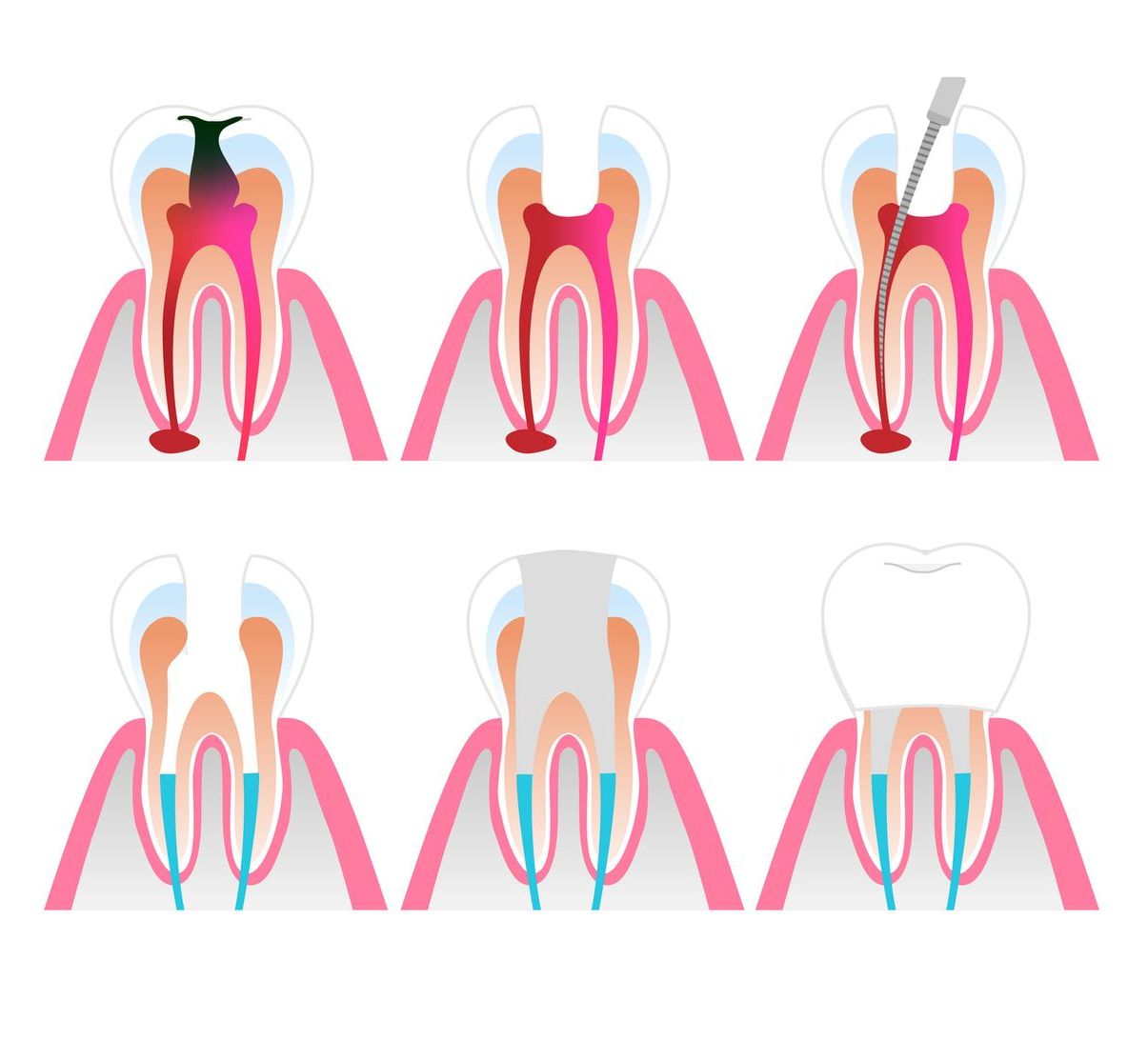Root canal treatment
What is root canal treatment
Root canal treatment is a dental procedure in which the tooth pulp and nerve is removed to save the tooth from being removed.
Root canal treatment should be started as soon as possible to improve the chances of success and prevent further infection. If the pulp of the tooth is not treated quickly, severe pain and abscesses can occur that could lead to further damage to the bone and the surrounding tooth structures.
MYth and fact
MYTH: We cut or
remove the nerve
FACT: The nerve, or pulp which is the soft tissue deep inside a tooth, is removed only if it is infected and dead and not repairable as it can cause more infection to spread. However, after the pulp has been removed, the tooth is not ‘dead’. The tooth can survive without the pulp because it is nourished mostly by tissues around it.
MYTH: Tooth extraction is a better alternative to root canal treatment.
FACT: If the root canal procedure is performed properly, the restored tooth can last for many years, or even a lifetime.
It is always preferable to save your teeth when possible as nothing, even an artificial tooth, can completely replace your natural teeth however good it may be as it will never be more than a substitute. Doing so you will be able to continue to enjoy the wide variety of foods necessary to maintain the proper nutrient balance in your diet as they are stronger and more efficient for biting and chewing.
So in order to save the tooth when the pulp is severely inflamed or infected, root canal treatment is needed when the pulp becomes severely inflamed or infected.
Root canal treatment is also a cost-effective way to treat teeth and is usually less expensive than extraction and placement of a bridge or an implant. Placement of a bridge or an implant will also require significantly more time in treatment and may result in further procedures to adjacent teeth and supporting tissues.
MYTH: ROOT CANAL PROCEDURE IS VERY PAINFUL.
FACT: It is not as painful as what make people make it out to be. This perception began decades ago but these days with modern technologies and anaesthetics, root canal treatment is no more uncomfortable than having a filling done. The pain that can be experienced due to an infected or inflamed tooth/nerve will be relieved after root canal treatment is performed. Some pain may still be experienced as the effect of anaesthesia wears off as the inflamed tissues at the root of the tooth are still in the process of healing, which can be relieved with the help of painkillers such as ibuprofen and prescribed antibiotics. The tooth may feel more sensitive, especially if there was a severe infection prior to the procedure but this will increasingly improve.
So What Will Happen If I
Decide To Pull My Tooth Out?
When a tooth is extracted, nearby teeth can move and tilt into the space left by the missing tooth. This can make biting and chewing difficult, can lead to further decay and gum disease and can change the natural appearance of your smile. The opposing tooth can also over erupt bringing it up or down into the missing space.
What Causes An Infection Or Inflammation Of The Pulp?
Breakdown of a filling or crown
A deep cavity
Trauma
Gum Disease
Crack of chip in the tooth
Extensive dental work to the tooth
Once the root canal treatment has been completed, follow up visits may be advised to see whether the treated tooth is healing satisfactorily.
A crown is strongly advised to be placed 3-6 months after that root canal is completed to maintain the integrity of the tooth and to reduce the need for more extensive treatments.
It is also recommended to ensure good oral hygiene habits are maintained such as brushing, flossing and of course regular dental check-ups to avoid any emergency treatment in the future.






